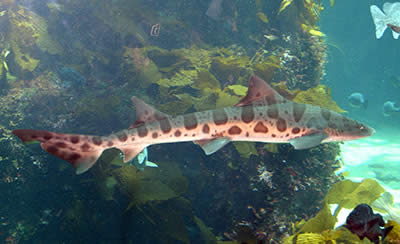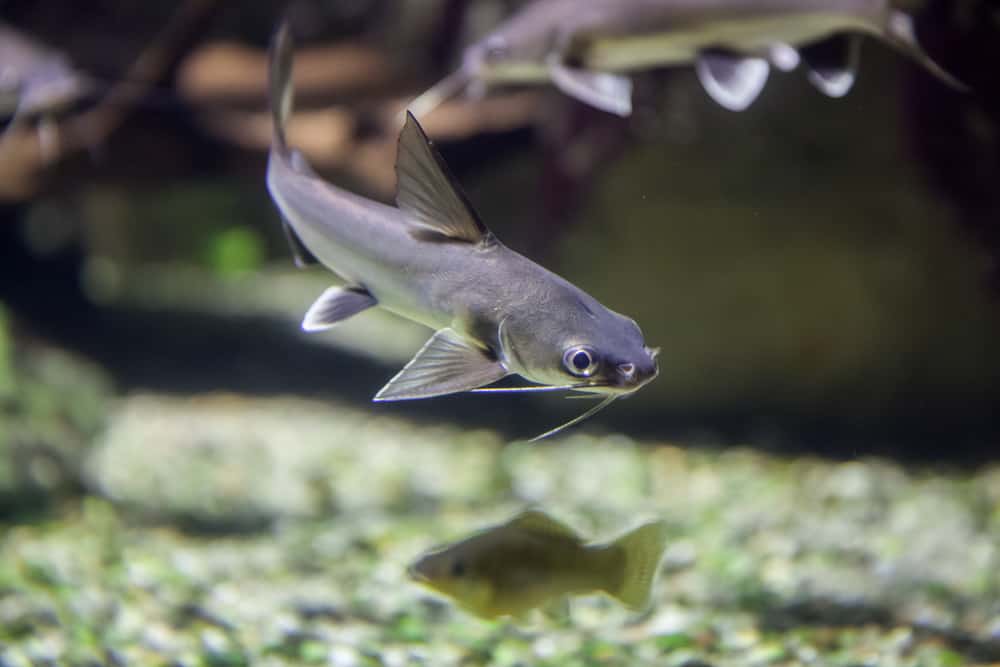
Sharks and Rays can both be fun additions to an aquarium that is large enough to suit the particular species (minimum size 180 gallons for the smaller or less active species), and that provides the right environment.
The Sharks and Rays belong to a subclass of animals called elasmobranchs. As noted by Scott W. Michael in his book, “Aquarium Sharks and Rays“, they are further divided into superorders, the Squalomorphii (sharks) and the Rajomorphii (rays). The differences between these two is slight and rays are essentially “flattened sharks”.
Sharks and rays should be kept by advanced marine aquarists and each species will vary in ease or difficulty to keep. Some are quite hardy in a regular marine system while others have very specific requirements. See an overview of sharks and rays below, and visit each fish for its particular needs.
Overview:
Most Sharks and Rays are large meat eaters that require large aquariums. Most grow to a minimum of 36 inches and require a minimum 180 gallon aquarium. Many sharks, like the leopard shark, shown above, can grow up to 6.5 ft. long and require a minimum 400 gallon tank.
You would think that the adult size of these fish would keep them out of the general aquarium hobby industry, but young, small sharks are still offered for sale to people who may not realize how big they can get. Some sharks that we have seen offered for sale but should be avoided because of their size are the Black Tip Reef Shark, Carcharhinus melanopterus (6 ft.), the Nurse Shark, Ginglymostoma cirratum (14 ft.), and the Cat Shark, Chiloscyllium confusum (7.2 ft).
The smallest Sharks and Rays that we have found are:
- Marbled Cat Shark, Atelomycterus macleayi: 60 cm (24″)
- Horned Shark, Heterodontus francisci: 96 cm (38″)
- Brownbanded Bamboo Shark, Chiloscyllium punctatum: 100 cm (40″)
- California Stingray or Round Stingray, Urobatis halleri, 26 cm (10.”)
- Blue Spotted Stingray, Taeniura lymma: 25 cm (10″) without the tail.
Descriptions:
Sharks are aggressive carnivorous predators that will eat anything that they can swallow whole. Usually though they will not attack healthy, normal acting fish but will be attracted by the smell of blood or raw meat. They will also sense fish that are acting abnormally, like goldfish in saltwater, and try to catch them.
Some sharks are constantly moving and searching for food, like the Leopard Shark found on the West Coast of the USA T. semifasciatus, while others, like the Leopard shark found in the Coral Sea, S. fasciatum, lie around waiting for food to come to them.
All sharks swim by moving their vertically oriented tail fin from side to side. In contrast, porpoise and dolphin have a horizontally oriented caudal fin which they move up and down. Most sharks are rather large and not well suited to life in captivity.
Most rays have a flattened body and are bottom-dwellers. This body shape enables them to better blend into their environment, and to bury themselves in a sandy substrate. In many species, this flattened body enables them to stay afloat with very little effort. Most rays swim by “flapping” their enlarged pectoral fins like wings, and those with a well developed caudal fin swim similar to the shark.
Care and feeding:
Should be fed all kinds of meaty foods, live or prepared. Fish, squid, shrimp, occasional live goldfish. Will eat most anything they can swallow in one bite.
Featured Image Credit: zsolt_uveges, Shutterstock










